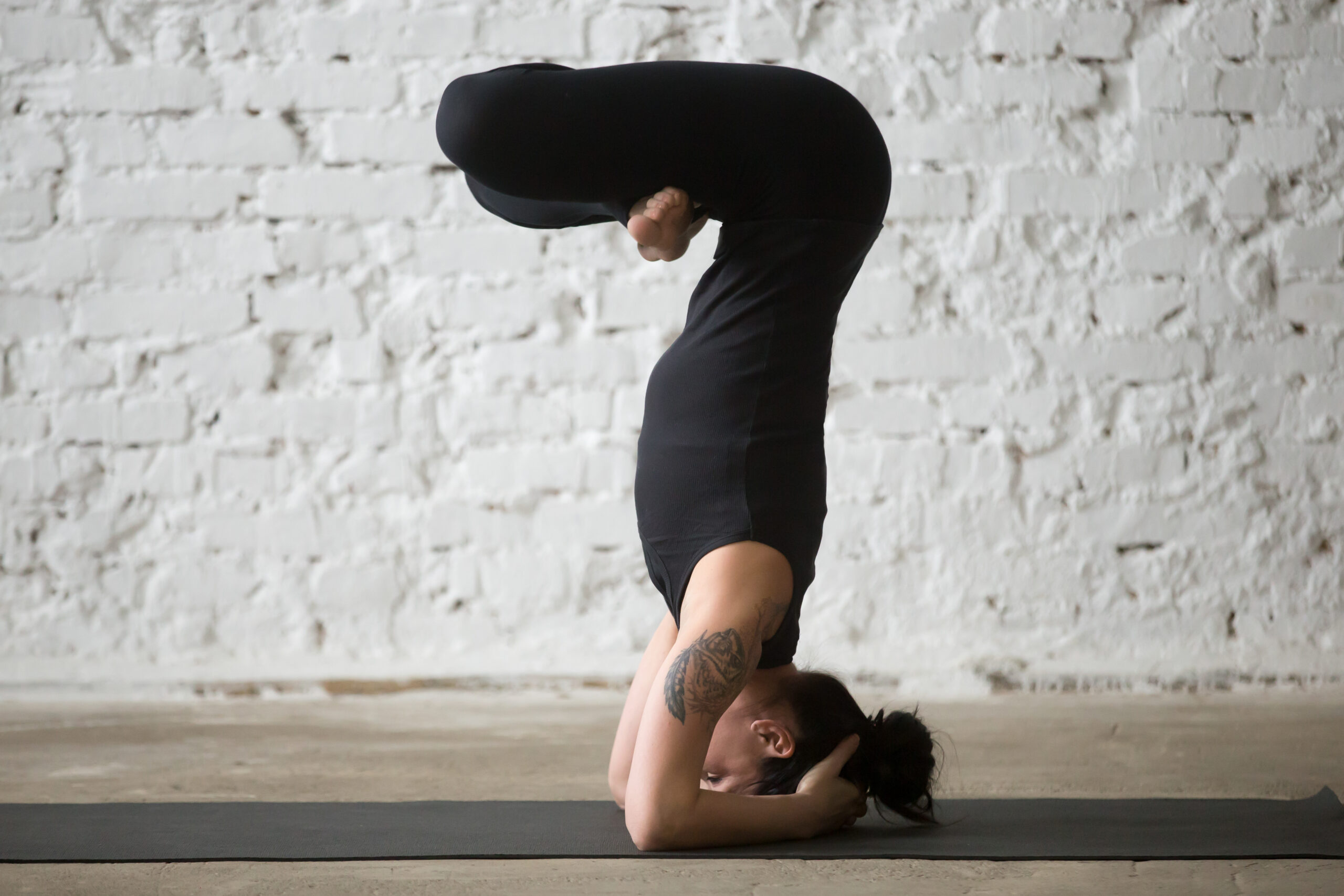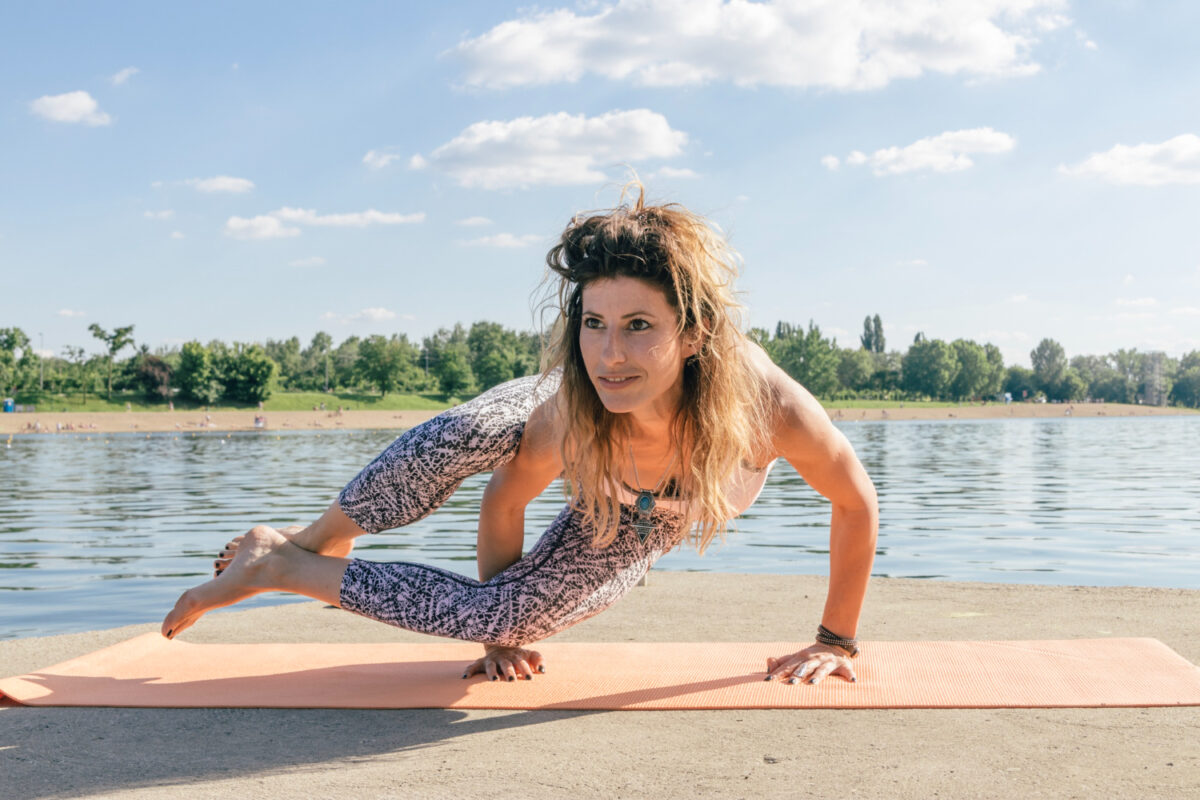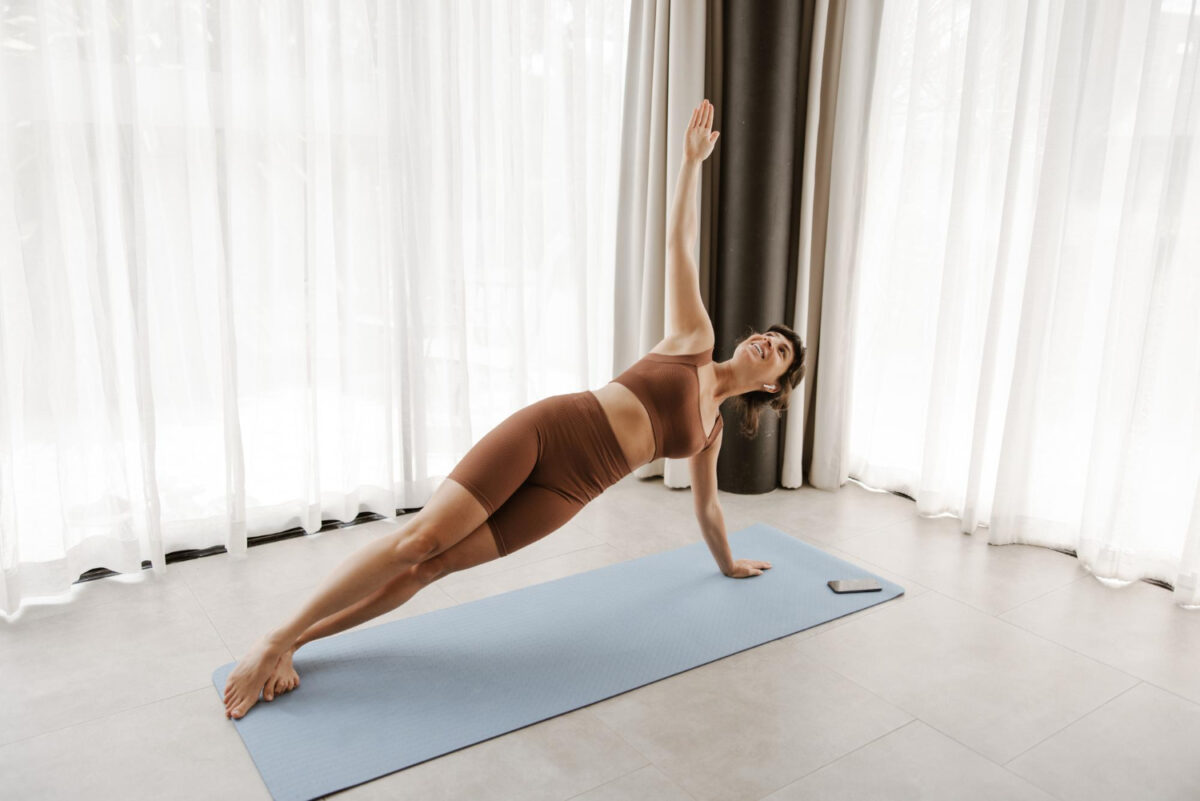The inverted postures are one of the surprises that the yoga practitioner finds in the classes. From Sincronia Yoga We tell you about the purpose and challenges of inverted postures in yoga.
What is an inverted posture in yoga
Technically we speak of inverted posture in those where the heart is above the head and therefore blood circulation goes against gravity and not in its favor.
This change of direction produces a series of extraordinary benefits in our body both because of the unusual position of the body, because of the blood flowing to the head, but also because of the change in the distribution of our vital energy.
There are inverted postures that are close and affordable for all practitioners. and others are further away or require constancy, practice and body awareness to do it safely.
The benefits of inverted postures
The practice of inverted postures generates a series of effects on our body, breathing and state. The main benefits would be:
Effects on the physical body:
- Strengthens the musculoskeletal system.
- Improves and reactivates blood circulation.
- Restores vitality.
- Balance the heart.
- Burn and empty toxins of all kinds.
- Relieves tension in the spine.
Effects on the mind:
- Calm the mind.
- Provides confidence in the body and its capabilities.
- It brings mental calm.
- Increases the capacity for concentration and attention.
- Quiet the restless mind.
Effect on the energetic body:
- Increases vital energy.
- Release and restore.
- It provides respiratory capacity and with it the mobilization of prana.
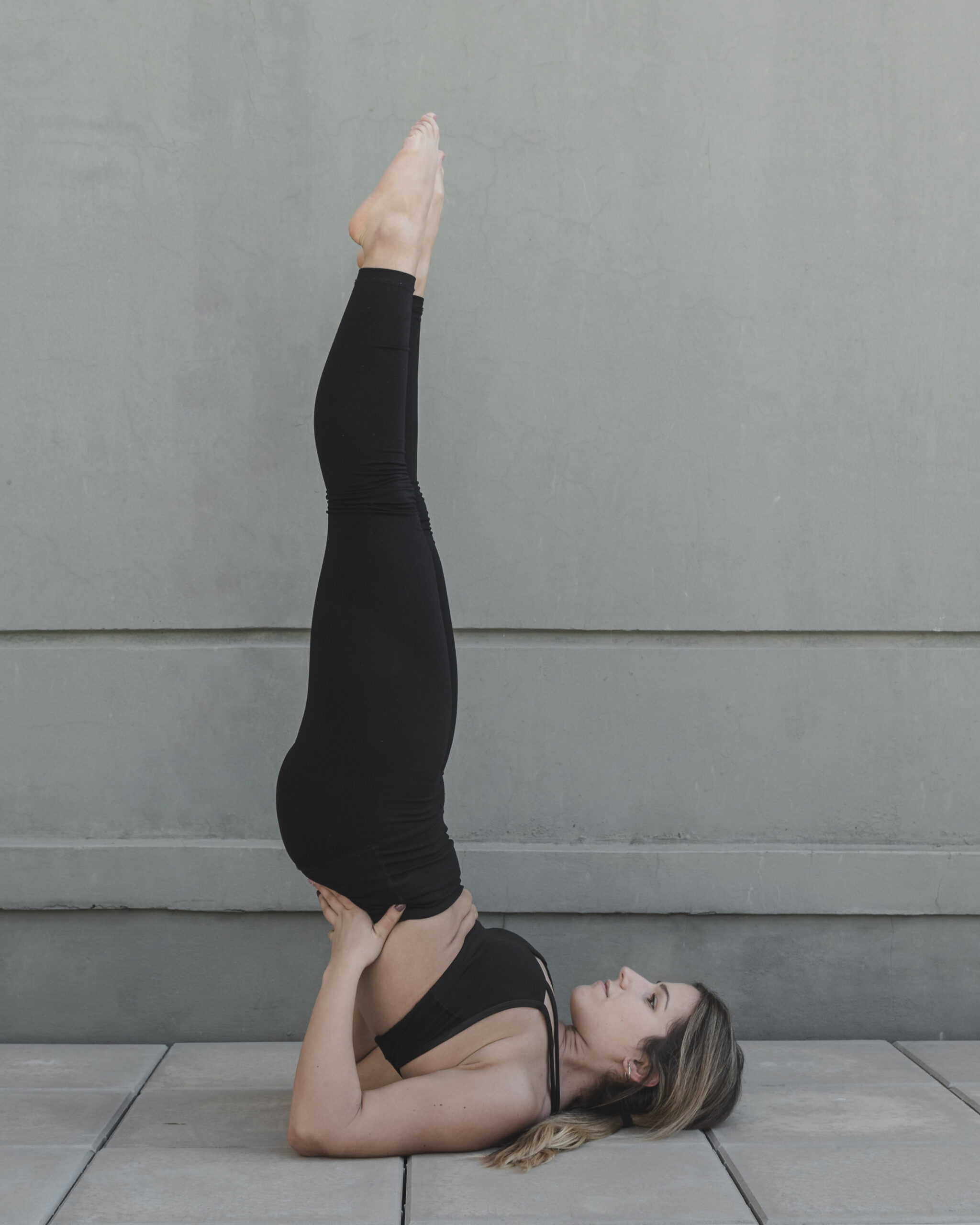
Contraindications of inverted postures
The same benefits of the inverted can be its great contraindications. Just as raising blood pressure can be beneficial for people with low blood pressure, it can be fatal for people prone to high blood pressure. Let's see in detail the main contraindications.
- Glaucoma or high pressure in the eyes: People with these difficulties, very common pathologies of aging, should avoid having the head below the heart so as not to add more blood pressure to the eyes.
- High blood pressure: for the same reason they will not be favorable positions and we must adapt or change them.
- Menstruation: Traditionally, menstruating women were prohibited from practicing inverted postures. The reason is that the rule is a process of elimination of the body and has a descending energy, when inverting the posture said energy changes the direction. Despite this, YEAH, you can practice inverted postures with menstruation. You will only have to change the times, instead of spending 5/10 minutes in the postures, keep them just a few breaths and then take a long break in balasana (the baby) embracing your body and bringing it back to the more internalizing energy that these days of your cycle require.
- Cervicalgias or cervical problems. In the case of hernias, protrusions and contractures of all kinds in the cervical area, it is not indicated to practice any position where the weight of the body falls on said area.. In this way we will avoid inverted supports on the head or head and shoulders, especially at the beginning of our practice, or we will use supports depending on our pathology.
My first contact with the practice of yoga was more than twenty years ago in a neighborhood house in my city. There a teacher, to whom I am eternally grateful for showing me yoga, helped the younger ones to get into the headstand (sirsasana) and left us there. The truth is that it was a rush of sensations and also left practice with a clear mind and clear ideas. Of course, due to my zero body knowledge at that time, I spent the whole week with cervical pain, even a physiotherapist I went to asked me if she shouldn't stop practicing yoga.
To avoid that bad drink, let's see how to build an inverted posture on what supports you need and how to practice it safely.
The postures according to their supports
In inverted postures our supports change. The way we relate to the earth. It is because of that require more body awareness, since they are not common postures of our body. That does not imply that we cannot do them and as we have seen their practice will bring us great benefits.
In the first group of supports we find the semi inverted postures. are toquellas where the heart is above the head but we do not lose the support of the feet or body, so they are usually quite close. They prepare us for other, more intense investments. We talk about positions like uttanasana (flexion of the spine and its variants with one leg raised, etc.), adho mukha svanasana (the dog facing down or the pyramid, also its variants), matsyabhedah (the dolphin), among others.
The postures with supports on shoulders, neck and head are still quite close for most practitioners., especially the versions with supports. They would be positions like viparita karani (right angle position or half sail), akunkanasana (the ball), sarvangasana (sailing), halasana (the plow), etc.
The postures with supports on the head and something on the hands, arms or shoulders, are traditionally considered inverted, something more demanding than the previous. We talk about sirsasana (posture on the head), dvipada viparita karani (over the head without raising the legs), kapalasana (the tripod) or niralamba sarvangasana (the sail without arm support).
Finally, heHands-only poses require more body awareness, some postures may be close but they are still demanding so as not to overload the wrists or neck. Some examples: pincha mayurasana (the peacock feather), bakasana (the crane), kakasana (The Raven), adho mukha vrksasana (the pine tree) and vrschikasana (the Scorpion).
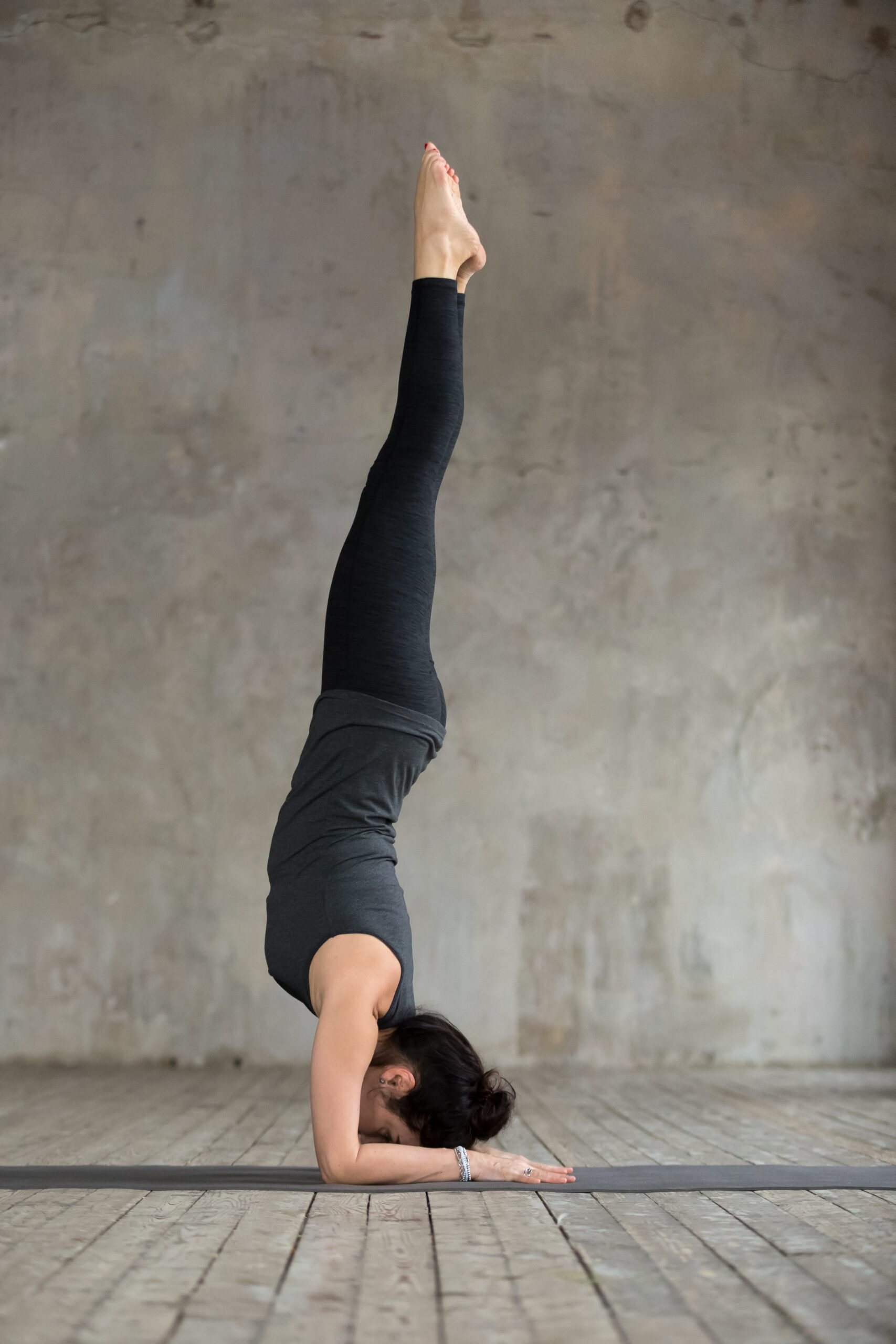
The construction of the inverted posture
Contrary to what it might seem, great physical strength is not required to invert the body, but body awareness is required. For example, in an inverted position where we lean on arms and head, the body must be maintained with the strength of the abdomen and pectorals and a good placement of the spine, without loading all the weight on the cervicals.
Thus, for the construction of the postures it is necessary:
- Know how to get into the pose and how to get out. Construction is part of it. This includes the case of "falling" from the posture, since we must know the reaction of our body, for example by placing our feet, to avoid hitting the spine.
- Activate the strength from our center, kanda, the center of the body of breathing, movement and vital energy. This vital point is located two fingers below our navel.
- A good one body alignment to avoid unnecessary loads that can lead to injuries. Knowing the points of support and strength of each posture, rebalancing the weight of our body and above all without collapsing.
- Last but not least: the trust. Confidence in the capabilities of our body, born from listening and internal understanding. Confidence also in being well accompanied and letting ourselves be guided by the indications of the teachers or professors that we have.
Remember that most postures can be adapted with supports such as blankets, blocks, the wall, and even practice benches for inverted postures that can help us deepen them, recognize ourselves in their practice, and gain confidence and strength.
As you gradually incorporate inverted postures into your yoga practice, you should apply the yoga philosophical concept of: regular, conscious, moderate and constant practice (abhyasa); and without attachment to the results (vairagya). This way you will get closer to a beneficial yoga with your state at all times, a yoga that adapts to you and not the other way around.
The inverted postures in yoga require being in good company to be able to practice them safely and to be able to benefit from the calm and serenity that they will bring to your practice. So, do you want to practice with us? We look forward to seeing you in our yoga classes in barcelona or in our online yoga classes.
Sílvia Gallego Yoga teacher, author and editor of breathing books.

